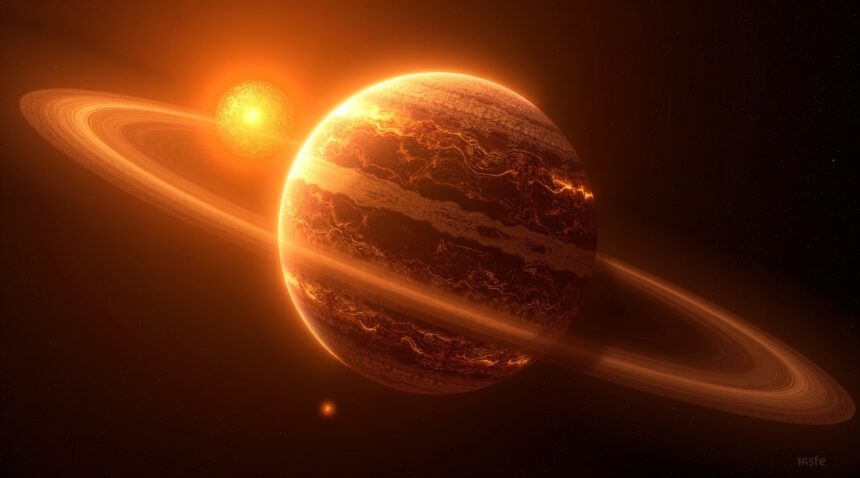NASA’s James Webb Space Telescope has made a groundbreaking discovery by identifying 55 Cancri e, an extraordinary exoplanet located 40-41 light-years away in the Cancer constellation, thought to contain massive diamond formations within its structure.
Key Takeaways
- Massive scale and composition: 55 Cancri e is around five times the size of Earth and may contain up to one-third diamond by mass, setting it apart from any known planet in our solar system.
- Extreme environmental conditions: With a surface temperature reaching approximately 2,400°C on its sun-facing side, this tidally locked planet has one hemisphere in eternal daylight while the other remains in perpetual darkness.
- Rapid orbital period: The planet orbits its star in just 17–18 hours, leading to immense gravitational forces that may shape its unique geological characteristics.
- Revolutionary planetary science: The discovery is redefining traditional theories of planetary formation and highlights the potential for carbon-rich worlds in stellar systems with unusual elemental compositions.
- Advanced detection capabilities: The James Webb Space Telescope‘s advanced infrared imaging and spectroscopic technologies enabled scientists to uncover these extraordinary features, advancing the field of exoplanet research.
A Massive Crystalline World Five Times Earth’s Size Discovered in Deep Space
NASA’s groundbreaking discovery using the James Webb Space Telescope has revealed an extraordinary celestial body that challenges our understanding of planetary composition. This remarkable world, designated 55 Cancri e, represents a cosmic treasure unlike anything found in our solar system.
The planet has earned its reputation as a “diamond planet” through scientific analysis that suggests a staggering reality. Scientific models indicate that as much as one-third of its mass could consist of crystalline diamond. This composition stems from the planet’s carbon-rich nature, where extreme pressure and temperature conditions have transformed carbon into both graphite and diamond formations throughout its structure.
Characteristics of This Super-Earth
- The planet measures five times larger than Earth, making it a truly massive world by terrestrial standards.
- Its location sits approximately 40-41 light-years from Earth within the Cancer constellation.
- The composition consists mainly of carbon in crystalline forms, creating a structure unlike any planet in our solar system.
- Surface conditions remain extremely hostile due to its proximity to its host star.
This exoplanet’s discovery highlights the incredible diversity of worlds that exist beyond our solar system. While the moon is gradually moving farther from the Earth, distant worlds like 55 Cancri e remain fixed in their alien orbits, offering glimpses into planetary formation processes that differ dramatically from those that shaped our own world.
The James Webb Space Telescope’s advanced capabilities made this discovery possible through its unprecedented ability to analyze the atmospheric composition and surface characteristics of distant exoplanets. The telescope’s infrared observations provided the detailed spectroscopic data necessary to determine the carbon-rich nature of this fascinating world.
What makes 55 Cancri e particularly intriguing is its position as a tidally locked planet, meaning one side permanently faces its star while the other remains in perpetual darkness. This extreme temperature differential creates unique conditions that contribute to the formation and stability of its diamond-rich composition. The day side experiences temperatures that would vaporize most known materials, while the night side remains relatively cooler.
The discovery adds to our growing catalog of exoplanets that defy conventional planetary models. Just as NASA scientists find essential for life building blocks in the moon of Saturn, each new discovery expands our understanding of how diverse planetary systems can be.
Scientists continue studying 55 Cancri e to better understand how such carbon-rich worlds form and evolve. The planet’s existence suggests that planetary formation processes can create worlds with compositions radically different from the rocky, metallic, or gaseous planets familiar in our solar system. This research contributes valuable insights into the variety of planetary types that may exist throughout the galaxy.
The implications of this discovery extend beyond simple scientific curiosity. Understanding how diamond planets form provides clues about the early conditions of stellar systems and the availability of heavy elements during planetary formation. These insights help astronomers refine their models of how different types of planets develop around various star types.
While the extreme conditions on 55 Cancri e make it utterly inhospitable to life as we know it, its study continues to reveal the remarkable diversity of worlds that populate our galaxy. Each observation brings new data about this crystalline giant, adding pieces to the puzzle of planetary formation and evolution in distant star systems.
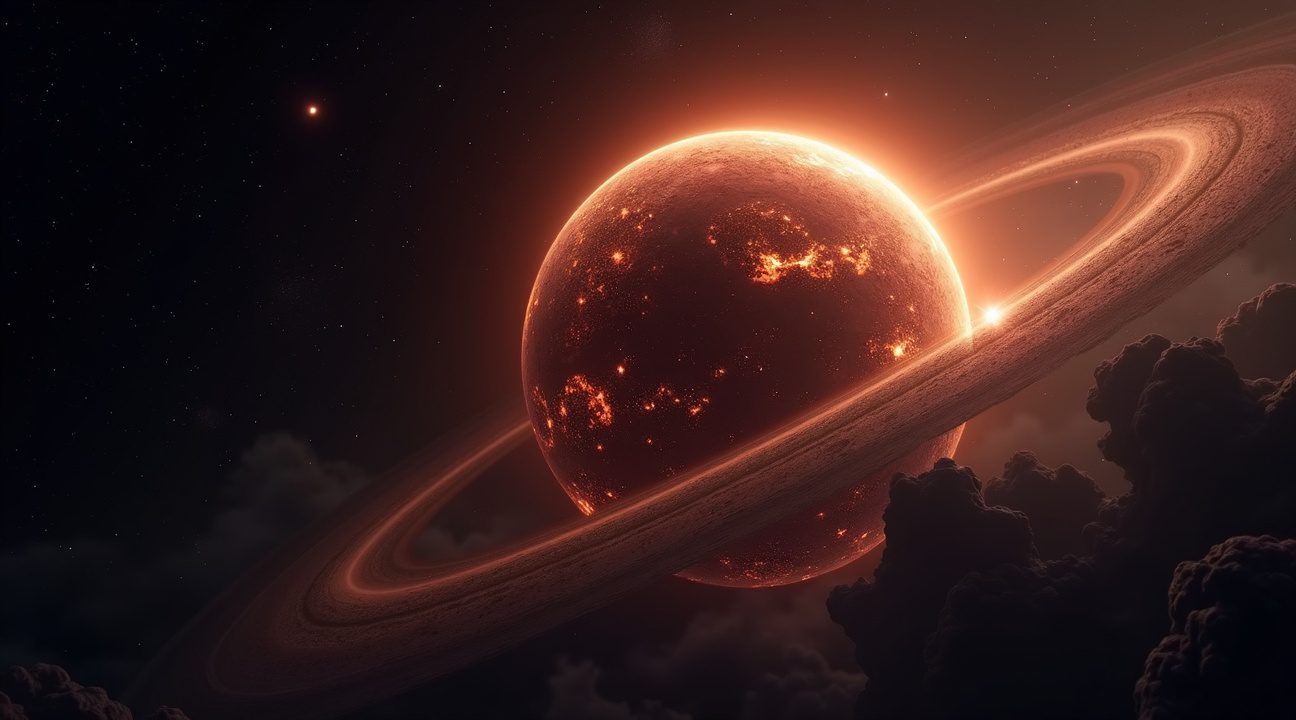
An Alien World of Extreme Heat and Perpetual Daylight
The diamond planet 55 Cancri e exists in conditions so extreme they challenge our understanding of planetary environments. Located in the Cancer constellation, this extraordinary world orbits dangerously close to its host star, completing a full revolution in just 17-18 hours—making its entire year shorter than a single Earth day.
Tidal Locking Creates a World of Extremes
This rapid orbit has created a tidally locked planet where one hemisphere basks in eternal sunshine while the opposite side remains frozen in perpetual darkness. I find this phenomenon particularly fascinating because it means 55 Cancri e experiences no traditional day-night cycle that we’re familiar with on Earth. The same face always points toward its star, much like how our moon always shows the same side to Earth.
The temperature differential between these two hemispheres is staggering. Surface temperatures on the sun-facing side can reach up to 2,400 degrees Celsius (4,352°F)—hot enough to melt copper, gold, and most other metals we encounter in daily life. Scientists believe these extreme temperatures create a molten, lava-like surface that constantly churns and flows across the daylight hemisphere.
A Planet Where Physics Meets the Extraordinary
These extreme temperatures play a crucial role in what makes this planet potentially diamond-rich. The intense heat and pressure conditions could theoretically convert carbon-based materials into diamond formations deep within the planet’s structure. While researchers continue studying similar phenomena, including essential building blocks for life found elsewhere in our solar system, 55 Cancri e represents something entirely different—a world where precious materials might exist on a planetary scale.
The rapid orbital period means that what we consider a year passes in less than 18 Earth hours. This creates gravitational stresses and tidal forces that constantly reshape the planet’s surface. The nightside hemisphere, by contrast, remains locked in temperatures that would still be considered extremely hot by Earth standards, though significantly cooler than the molten daylight regions.
These conditions make 55 Cancri e one of the most hostile environments discovered in our galaxy. No known life forms could survive such temperatures, and any future exploration missions would require technology far beyond our current capabilities. The planet serves as a natural laboratory for understanding how extreme heat, pressure, and rapid orbital mechanics interact to create unique planetary characteristics—including the potential formation of diamond materials on an astronomical scale.
A Planet Made of Graphite and Diamond Instead of Rock and Water
55 Cancri e stands as one of the most extraordinary planetary discoveries in modern astronomy, fundamentally challenging our understanding of planetary formation. This remarkable world consists predominantly of carbon, creating a composition that differs drastically from Earth’s familiar silicate-based geology.
Carbon-Rich Composition Under Extreme Conditions
The immense pressure conditions on 55 Cancri e transform vast quantities of carbon into crystalline diamond structures throughout the planet’s interior. Surface observations suggest an expanse dominated by graphite and diamond formations rather than the water and silicate rock combinations that characterize terrestrial planets. This carbon planet represents an entirely different category of world, where the fundamental building blocks create landscapes that would appear alien to Earth-based observers.
Scientists believe the extreme gravitational forces compress carbon atoms into diamond lattices deep within the planet’s core and mantle regions. These conditions produce a world where precious gemstones that humans value so highly become the basic geological foundation. The planetary composition indicates that carbon planets like 55 Cancri e may be more common than previously thought, especially in star systems with different elemental abundances than our solar system.
Unique Atmospheric Properties and Volcanic Activity
Despite its proximity to its parent star, 55 Cancri e maintains a secondary atmosphere likely created through volcanic outgassing processes. This atmospheric characteristic proves particularly unusual among exoplanets orbiting so close to their host stars, where stellar radiation typically strips away atmospheric components. The volcanic activity suggests active geological processes continue shaping the planet’s surface, releasing gases that contribute to atmospheric density.
I find it fascinating that this NASA discovery opens new possibilities for understanding planetary diversity beyond our solar system. The secondary atmosphere formation through outgassing demonstrates that even carbon-based worlds can maintain complex atmospheric systems under the right conditions. This discovery expands the potential for finding diverse planetary types throughout the galaxy.
The volcanic outgassing process on 55 Cancri e likely releases carbon-based compounds into the atmosphere, creating a chemical environment completely unlike Earth’s oxygen-nitrogen mixture. These atmospheric conditions, combined with the diamond and graphite surface composition, paint a picture of a world where the very ground sparkles with crystalline formations. Such planetary characteristics challenge astronomers to reconsider how planets form and evolve in different stellar environments.
Current research suggests that carbon planets form in stellar regions with higher carbon-to-oxygen ratios than those found in our solar system. This discovery of 55 Cancri e provides crucial evidence that planetary formation processes can produce worlds with compositions radically different from the rocky, water-bearing planets we know best. The implications extend beyond simple curiosity, potentially informing future searches for habitable worlds and expanding definitions of what constitutes a planet.
Understanding carbon planets like 55 Cancri e helps scientists refine models of planetary formation and evolution across the galaxy. The graphite and diamond composition suggests these worlds form through processes where carbon condenses first, before silicate materials, creating fundamentally different geological foundations. This knowledge proves valuable for interpreting observations of other exoplanets and predicting the diversity of worlds that exist beyond our solar system.
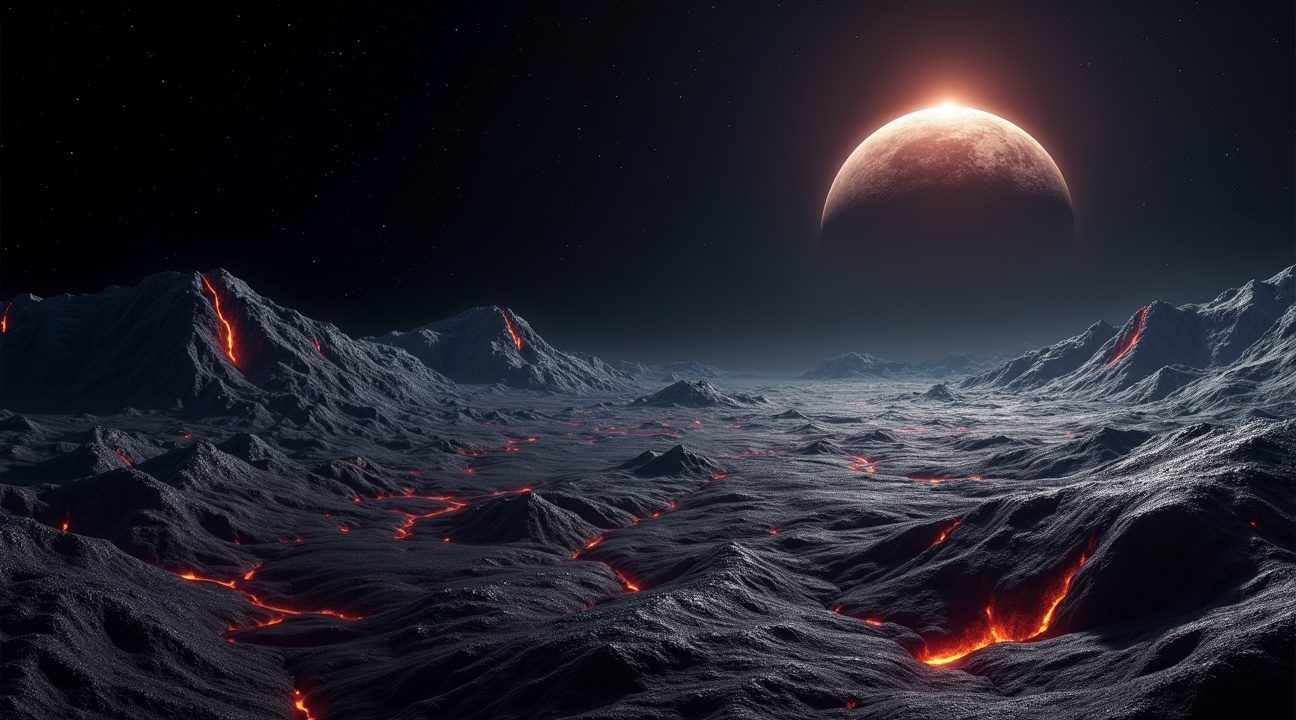
How This Discovery Challenges Everything We Know About Planet Formation
The discovery of diamond planets like 55 Cancri e fundamentally reshapes our understanding of how worlds form and what they can be made of. I’ve watched the scientific community grapple with this revelation that challenges decades of established planetary formation theory.
Redefining Planetary Composition Beyond Earth’s Blueprint
Traditional planetary formation models assumed that rocky planets would resemble Earth’s basic structure – a silicate crust surrounding metallic cores. Diamond planets shatter this assumption completely. These carbon-rich worlds demonstrate that entire planets can form from carbon allotropes like diamond and graphite rather than the familiar silicon-based materials we see on Earth.
The implications stretch far beyond simple composition differences. Carbon-based planetary formation requires entirely different conditions and processes than what creates silicate worlds. Temperature, pressure, and chemical environments must align in specific ways to produce these crystalline giants. Scientists now recognize that planetary formation operates under a much broader range of conditions than previously thought.
Expanding Our View of Cosmic Diversity
With at least 6,000 confirmed exoplanets catalogued and thousands more awaiting verification, discoveries like 55 Cancri e highlight just how diverse planetary systems can be. Each new discovery forces astronomers to expand their models of what’s possible in planetary formation.
The existence of diamond planets proves that our solar system represents just one possible outcome among countless variations. While essential building blocks for life might exist in unexpected places, carbon-rich worlds operate under completely different rules than Earth-like planets.
These findings revolutionize how scientists approach exoplanet discovery and classification. Previous search strategies focused heavily on finding Earth analogs, but diamond planets demonstrate that habitable or scientifically interesting worlds might exist in forms we never imagined. The diversity extends beyond just composition – it includes formation timelines, atmospheric development, and evolutionary pathways.
Diamond planets like 55 Cancri e form through processes that concentrate carbon in ways Earth’s formation never experienced. The host star’s composition, the timing of planetary accretion, and the availability of carbon versus silicon all influence whether a world becomes a diamond giant or a familiar rocky planet.
This discovery forces a complete reconsideration of planetary classification systems. Scientists can no longer assume that size alone determines planetary type or formation history. A planet five times Earth’s size made primarily of diamond operates under entirely different physical laws than a similarly sized rocky world.
The scientific importance of understanding planetary diversity extends beyond academic curiosity. Each new type of planet discovered provides clues about the conditions that existed during the early universe’s planet-forming epochs. Diamond planets serve as natural laboratories for studying extreme pressure and temperature conditions that don’t exist anywhere in our solar system.
Future missions will need to account for this expanded understanding of planetary diversity. Instruments designed to study exoplanets must be capable of detecting and analyzing carbon-rich worlds alongside traditional rocky and gaseous planets. The techniques used to study 55 Cancri e’s diamond composition will inform how scientists approach similar discoveries.
The formation processes that create diamond planets also suggest that carbon concentration mechanisms operate throughout the galaxy. This means diamond worlds might be far more common than initially thought, hiding among the thousands of exoplanets awaiting detailed analysis.
Scientists now recognize that planetary formation represents a spectrum of possibilities rather than a few distinct categories. Diamond planets occupy a unique position on this spectrum, demonstrating that carbon-rich environments can produce stable, long-lived worlds. Understanding how these planets form and evolve provides crucial insights into the fundamental processes that shape planetary systems throughout the universe.
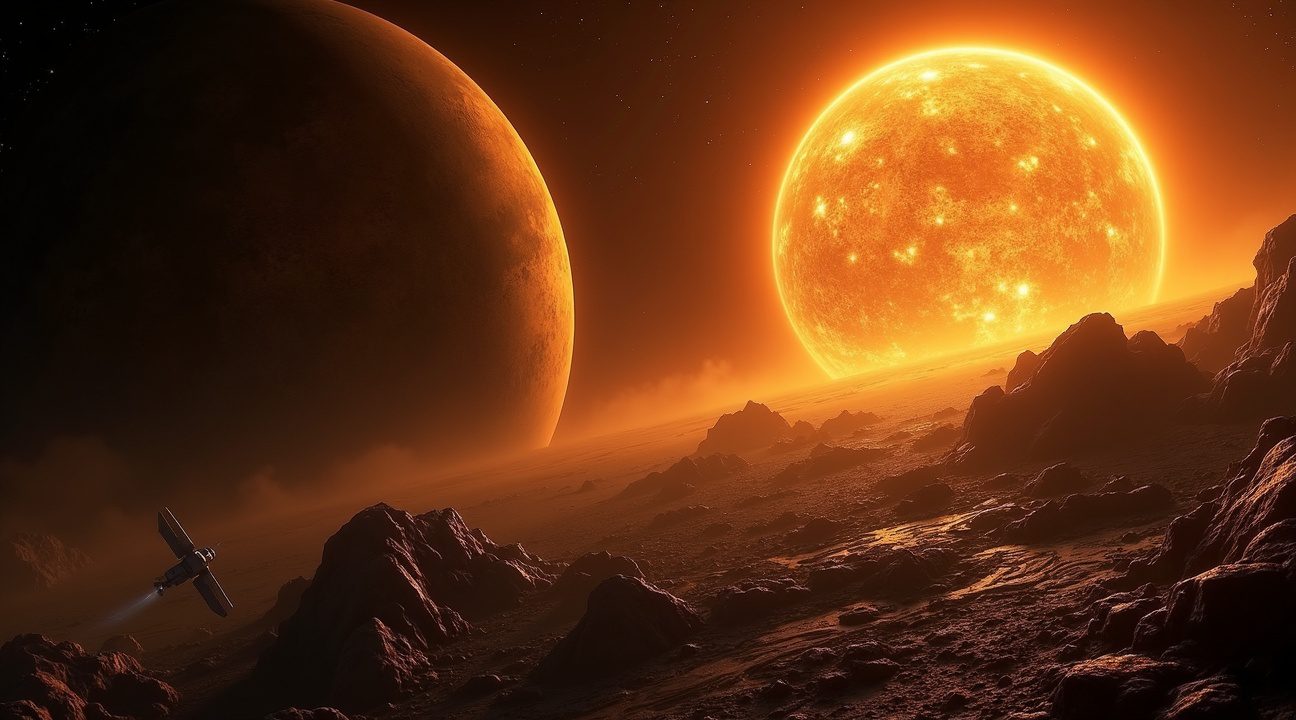
Diamond Worlds in Our Own Solar System vs. Deep Space
The discovery of 55 Cancri e opens fascinating comparisons between potential diamond-rich worlds in our own solar system and the exotic carbon planets found in distant star systems. NASA scientists have long studied the possibility that Mercury harbors a substantial diamond layer beneath its surface, but this differs dramatically from what researchers observe in 55 Cancri e.
Mercury’s theorized diamond layer extends up to 18 km thick, formed through intense pressure and temperature conditions within the planet’s mantle over billions of years. This subsurface diamond formation results from carbon that became trapped and compressed during Mercury’s early formation, creating a hidden treasure trove beneath the planet’s rocky exterior. However, Mercury’s diamond layer represents only a fraction of the planet’s total composition, buried deep within its interior structure.
Contrasting Formation and Composition
The fundamental difference between Mercury’s potential diamond layer and 55 Cancri e lies in their overall planetary composition and formation mechanisms. Mercury’s diamond layer forms a distinct boundary within the planet’s internal structure, while 55 Cancri e appears to be dominated by carbon throughout its entire bulk composition. This makes 55 Cancri e an entirely new category of planetary body that challenges existing models of planet formation.
Carbon-rich planets like 55 Cancri e likely formed in stellar environments with different carbon-to-oxygen ratios compared to our solar system. These conditions allowed carbon to become the dominant building material rather than the silicon-based rocks common in terrestrial planets. The extreme temperatures on 55 Cancri e’s surface potentially convert surface carbon into diamond and graphite formations on a planetary scale.
Mercury’s diamond layer formation involves different geological processes, where carbon materials became compressed within the planet’s mantle over geological timescales. The planetary dynamics that created Mercury’s internal structure differ significantly from the stellar formation conditions that produced 55 Cancri e’s carbon-dominated composition.
Planetary comparison studies reveal that 55 Cancri e represents a completely new class of exoplanet that doesn’t exist within our solar system. While Mercury may contain substantial diamond deposits hidden beneath its surface, 55 Cancri e appears to be fundamentally constructed from carbon-based materials. This distinction places 55 Cancri e in a unique category of super-Earth exoplanets that expand our understanding of possible planetary compositions.
The graphite and diamond formations on 55 Cancri e likely occur across the planet’s surface and potentially throughout its interior, depending on pressure and temperature variations. Mercury’s diamond layer remains confined to specific depth ranges within the planet’s mantle, where conditions favor diamond formation over other carbon structures.
Research into carbon-rich planets continues to reveal the incredible diversity of planetary compositions possible under different stellar formation conditions. The discovery of 55 Cancri e demonstrates that planets can form with radically different material compositions than those found in our solar system, opening new avenues for understanding planetary formation processes across the galaxy.
These findings suggest that diamond-rich worlds may be more common in the universe than previously thought, existing both as hidden layers within rocky planets like Mercury and as the primary composition of exotic exoplanets like 55 Cancri e. Each type represents different pathways for carbon concentration and diamond formation in planetary systems, providing valuable insights into the diverse conditions under which planets can form and evolve throughout the cosmos.
The Future of Studying Extreme Diamond Worlds
I find 55 Cancri e particularly fascinating as it represents a prime target for ongoing scientific investigation. The James Webb Space Telescope has already begun providing unprecedented insights into this extraordinary world’s atmosphere and composition through advanced spectroscopic observations. These cutting-edge tools allow researchers to analyze the planet’s thermal emissions and atmospheric properties in ways that were previously impossible.
Advanced Research Techniques and Future Missions
Several key areas will drive future exoplanet research focused on this diamond world:
- Enhanced spectroscopic analysis will reveal detailed atmospheric composition and temperature variations across the planet’s surface
- Advanced thermal mapping techniques will help scientists understand heat distribution patterns and potential volcanic activity
- Comparative studies with other extreme exoplanets will provide broader context for planetary evolution theories
- Next-generation space telescopes will offer even higher resolution observations of surface features and atmospheric dynamics
The unusual characteristics of 55 Cancri e make it an ideal model system for studying how planets evolve under extreme conditions. Its proximity to its host star creates temperatures exceeding 3,600 degrees Fahrenheit, making it a natural laboratory for understanding how rocky planets behave in such harsh environments. I believe this research will fundamentally change our understanding of planetary formation processes.
Future missions will likely focus on determining the exact structure of the planet’s interior, where diamond formations may exist under immense pressure. Scientists anticipate that improved detection methods will reveal whether active geological processes, including possible volcanic activity, continue to shape the planet’s surface. These discoveries could provide crucial insights into how essential building blocks for life might survive or form under extreme conditions.
Extreme exoplanets like 55 Cancri e serve as crucial stepping stones for understanding the incredible diversity of worlds throughout the universe. Each new observation adds another piece to the puzzle of planetary evolution, helping scientists refine models that explain how different types of planets form and change over time. The data collected from studying this diamond world will inform future exploration strategies and help identify other potentially unique planetary systems worthy of detailed investigation.
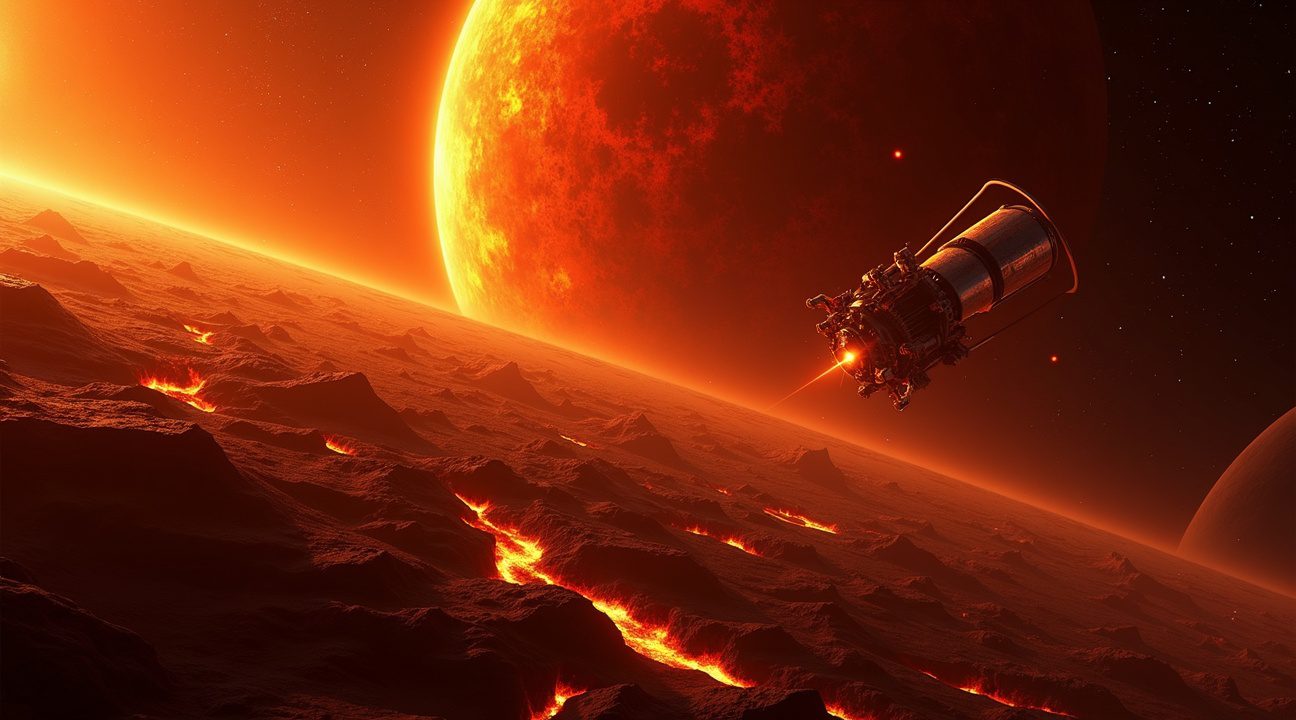
Sources:
STEM News – NASA Discovers Giant Diamond Planet
Times of India – A World of Diamonds: NASA James Webb Space Telescope Discovers a Gem-Rich Planet Five Times Larger Than Earth
Earth.com – NASA Finds Layer of Diamonds 10 Miles Thick on Planet Mercury
Space.com – We’ve Officially Found 6,000 Exoplanets, NASA Says

